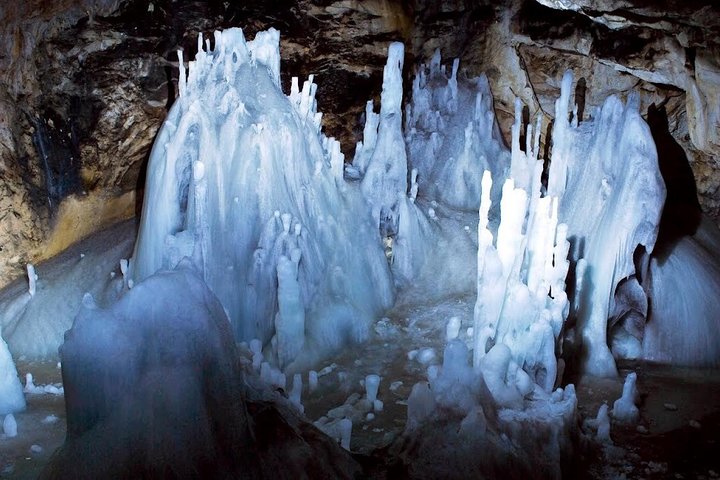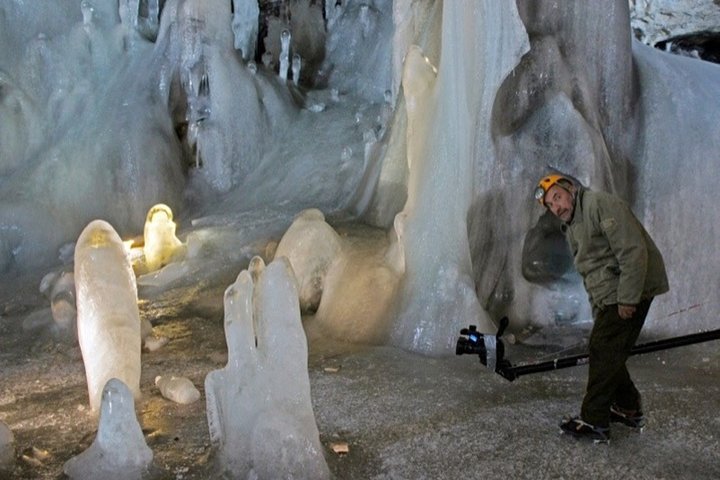We pick you up from your Oradea or Baile Felix hotel at 8 o'clock in the morning and we are going to Scarisoara Ice cave situated around 140 km away.
Our trip lasts around 3 hours.
Once there, we are visiting the cave ( around 2 Hours).
After a conducted research, the glacier was assessed to be 3000 years old. Because the study was conducted in an area where the glacier did not reach the maximum thickness, they considered that the oldest ice layers must have been deposited at least 4000 years ago.
The cave has many sectors that have different names. Thus, right after the entrance one may see the Big Hall and afterwards The Church where there are more than 100 ice stalagmites, The Church being in fact the main touristic attraction. To the left of this hall, walking through a 70 m long gallery, one can reach both The Great Reservation and The Small Reservation. Visiting these sections is allowed only for scientific goals and with the agreement of the Speological Institute “Emil Racovita” in Cluj. The Gallery Maxim Pop lies at 105 m underground, which is the maximum depth of the cave. The other two sections of the cave are The Cathedral and Sanziana’s Palace, but they don’t contain ice.
After the visit of Scarisoara glacier, we are heading toward "Casa de piatra" (House of Stone) Village where the nature offers us a magnificient landscape,
We can visit:Tauz Spring, Coiba mare and Coiba Mica caves and if it is open for visitors also Virtop Ice cave (season Jun - Sepember)
We may stop somewhere to eat and drink at your choice.
The retour lasts other 3 hours. At evening we shall drop you off at your hotel.(Oradea or Baile Felix)
The tour includes :pick-up and drop off, tour guide in English and German and minivan transport (Opel or Mercedes)






